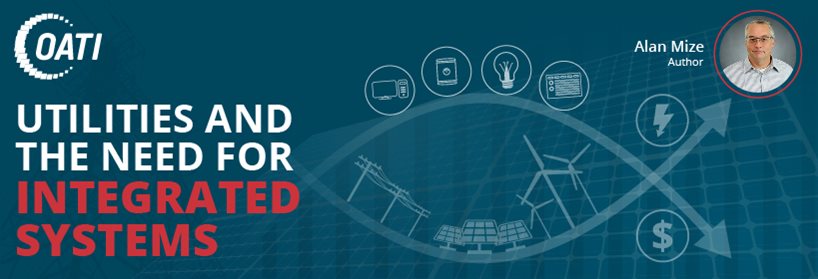Home » Blog » Grid Modernization » Why Utilities Face the Need for Highly Integrated Systems
Why Utilities Face the Need for Highly Integrated Systems
During a recent drive from Texas to Kansas, crossing through Oklahoma, I saw hundreds of turbines on wind farms with stationary blades. On that specific day, there may have been a forecast for low to no wind, and there are times when the wind does not blow and it brings the renewable energy production down to a negligible amount. A recent example of this is the stage one grid emergency, which was issued in California in May 2017 due to high temperatures, no-show imports, a generator failure, and a rebuff from suppliers. This made me wonder about the need for a fully integrated system to manage situations like these from the market side.
The Electric Reliability Council of Texas (ERCOT) set a winter power use record the morning of January 17, 2018, resulting in pushed up power prices and increased power plant output. Peak demand for the market reached 65,731 MW between 7:00 and 8:00 AM, with power prices briefly reaching above $2,200/MWh. As a response to the higher prices, five plants in the city increased their generation. These five plants were beneficiaries of the increased prices.
A situation like this can also occur in the real-time market, in which weather-related asset issues are a cause for concern. This requires companies to be highly responsive and, ultimately, presents the need to have truly integrated systems that provide information and enable companies to make quick decisions that are instantly communicated back to the market.
It is essential to have the correct systems in place because integration points between different IT vendors are one of the most time-consuming aspects to maintain. To reduce your risk of failures, it is best to work with a vendor who offers the majority of your system requirements and has a long track record of open communication with entities.
These events should also be looked at while stress testing a portfolio. A company that understands the impacts before an event often responds best when it does occur. Not being able to respond to an incident due to technical issues can result in huge financial losses and damages to the company’s reputation. Having a vendor with secure connections and replication occurring on those connections, will ensure you are ready to respond at any time.
There are multiple ways in which OATI can help you solve the problems, be it the stationary wind turbines or any acute situation that occurs in real-time market. Our Demand Response Management System (DRMS), webDistribute®, is a comprehensive tool for the monitoring, control, scheduling, and managing of Distributed Energy Resources (DERs) and Demand Response (DR). Our forecasting module and energy bid optimization software, webSmartBid™, helps generation owners quickly and easily select the most promising offer strategy for their market through a flexible and comprehensive analytical tool set that performs what-if scenario analyses and computes forecasted, estimated, and actual Profit and Loss (P&L).
To learn more about these OATI solutions, please contact Sales@oati.net.
About the Author
Mr. Alan Mize has been in the energy industry for over sixteen years, has almost five years of Account Management experience, and over seven years of implementation experience of vendor Energy Management Systems (EMS) and building in-house EMS. In previous positions, he has managed projects of varying sizes and served in various management positions. Mr. Mize is an Account Executive at Open Access Technology International, Inc. (OATI).
- November 8, 2018
